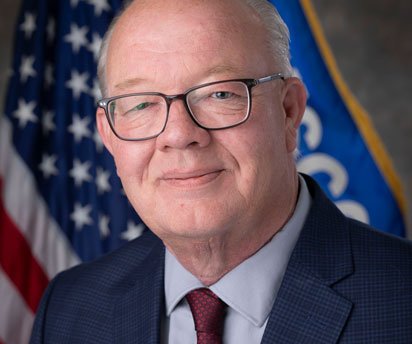With more than 270 million subscribers, cell phones are a vital means of communications for the vast majority of Americans. The enormous growth in the use of cell phones means that maintaining competition in this industry is more important than ever.
Cell phones enable instantaneous communications for millions wherever they are located, whether at work, at home, away from home, in their car, or anywhere in between. Many Americans - over 20 percent - have now discarded traditional land line phones and depend entirely on cell phones. The ease, convenience, and universal nature of today's cell phone service would have been unimaginable just two decades ago.
Nowhere is the changed market for cell phones more noticeable than in text message service. These short, instant messages delivered via cell phones have become enormously popular. In 2008, more than one trillion text messages were sent, more than triple the number just two years before. As their popularity has grown, so has the price charged on a per message basis.
From 2006 to 2008, the price of sending and receiving a text message among the four largest cell phone carriers increased by 100 percent - from 10 to 20 cents per message. The four companies increased their text messaging prices in two steps - first from 10 to 15 cents, and then from 15 to 20 cents - within months or weeks of each other. These lockstep price increases occurred despite the fact that the cost to the phone companies to carry text messages is minimal - estimated to be less than a penny per message - and has not increased.
I convened a hearing on this issue at the Antitrust Subcommittee a few days ago to try get to the bottom of this. At the hearing, the phone companies defended these price increases by asserting that they have not been coordinated in any respect. They also pointed out that the majority of cell phone customers do not pay for text messages on a per message basis, but instead buy plans for "buckets" of text messages, typically starting at $5 for 200 messages. But is this simply a method to force consumers into expensive plans they would not have needed if the per message rate hadn't gone up?
Nonetheless, these sharp price increases raise concerns. Are these price increases the result of a lack of competition in a highly concentrated market? Will consumers continue to see similar price increases for this and many other wireless services that they have come to increasingly depend on, such as internet connections and basic voice service? Do text message price increases represent a canary in the coal mine for the state of competition in the cell phone industry as a whole?
The concentrated nature of today's cell phone market should make us wary of other challenges to competition in this industry. It is imperative that we work to remove undue barriers to competition to ensure consumers the best rates and services.
- Sen. Herb Kohl is a Democrat from Wisconsin.
Cell phones enable instantaneous communications for millions wherever they are located, whether at work, at home, away from home, in their car, or anywhere in between. Many Americans - over 20 percent - have now discarded traditional land line phones and depend entirely on cell phones. The ease, convenience, and universal nature of today's cell phone service would have been unimaginable just two decades ago.
Nowhere is the changed market for cell phones more noticeable than in text message service. These short, instant messages delivered via cell phones have become enormously popular. In 2008, more than one trillion text messages were sent, more than triple the number just two years before. As their popularity has grown, so has the price charged on a per message basis.
From 2006 to 2008, the price of sending and receiving a text message among the four largest cell phone carriers increased by 100 percent - from 10 to 20 cents per message. The four companies increased their text messaging prices in two steps - first from 10 to 15 cents, and then from 15 to 20 cents - within months or weeks of each other. These lockstep price increases occurred despite the fact that the cost to the phone companies to carry text messages is minimal - estimated to be less than a penny per message - and has not increased.
I convened a hearing on this issue at the Antitrust Subcommittee a few days ago to try get to the bottom of this. At the hearing, the phone companies defended these price increases by asserting that they have not been coordinated in any respect. They also pointed out that the majority of cell phone customers do not pay for text messages on a per message basis, but instead buy plans for "buckets" of text messages, typically starting at $5 for 200 messages. But is this simply a method to force consumers into expensive plans they would not have needed if the per message rate hadn't gone up?
Nonetheless, these sharp price increases raise concerns. Are these price increases the result of a lack of competition in a highly concentrated market? Will consumers continue to see similar price increases for this and many other wireless services that they have come to increasingly depend on, such as internet connections and basic voice service? Do text message price increases represent a canary in the coal mine for the state of competition in the cell phone industry as a whole?
The concentrated nature of today's cell phone market should make us wary of other challenges to competition in this industry. It is imperative that we work to remove undue barriers to competition to ensure consumers the best rates and services.
- Sen. Herb Kohl is a Democrat from Wisconsin.





